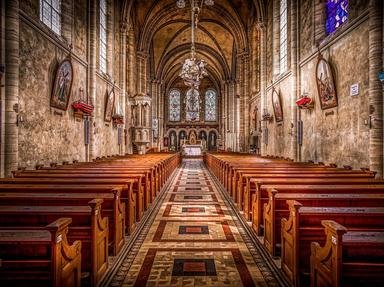
Order of the Roman Catholic Mass Quiz
The Roman Catholic Mass is a universal unifying act for Catholics worldwide. Its liturgy remains the same in every country, barring language of course. Any quotations are from the new Mass translations from the 2011 Novus Ordo.
An ordering quiz
by Midget40.
Estimated time: 3 mins.